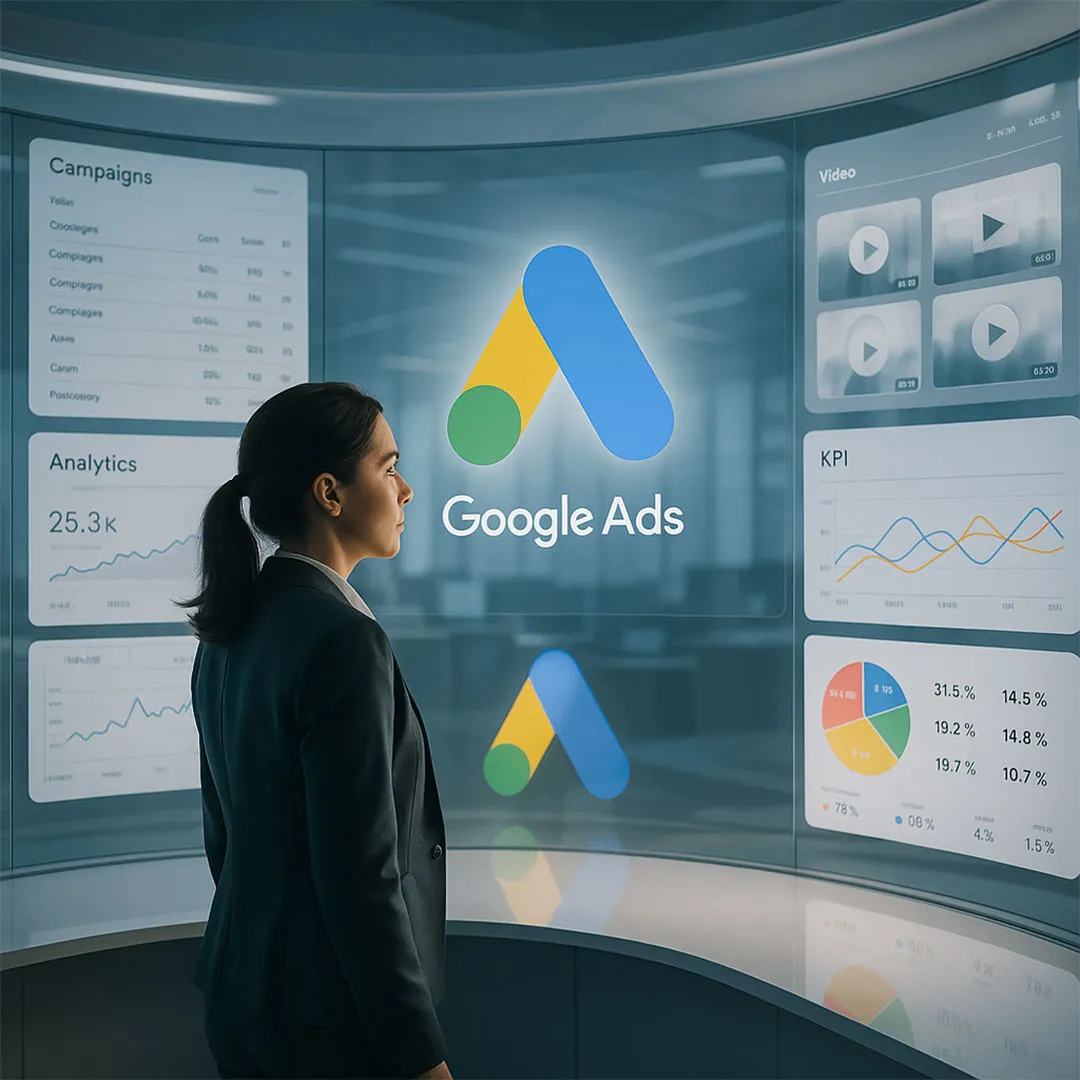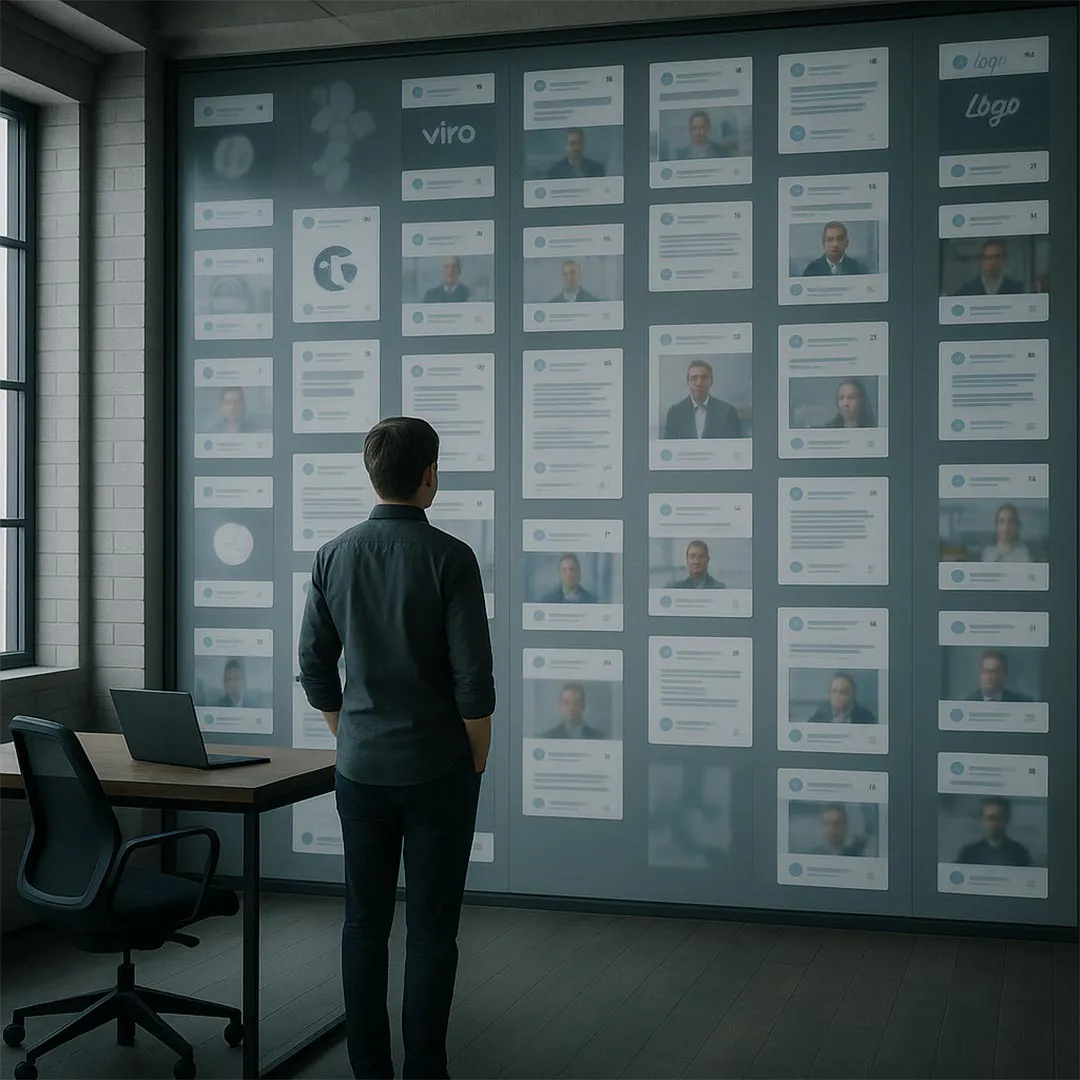
Contemporary website: How to modernize your web presence
26. November 2025
A contemporary website determines trust, visibility, and conversion. Learn how modern websites work and how you can successfully modernize your web presence.
Overview
- You increase visibility, trust, and conversion when your website is modern, fast, mobile-optimized, and accessible.
- You prevent losses in sales and rankings by clearly planning and continuously optimizing technology, UX, content, and performance.
- You secure long-term benefits because modern, AI-powered websites strengthen your marketing and create room for growth.
How does your website appear at first glance? Users decide in less than a second whether a page creates trust or not. A contemporary website increases your visibility, conversions and customer satisfaction. Old websites, on the other hand, cost revenue, reach and credibility. Many companies underestimate how strongly outdated technology, poor performance or lack of mobile optimisation affect results.
Modern websites set clear standards for design, structure, accessibility and speed. This article shows you how a contemporary website is built, which problems old pages cause and which steps help you modernise your online presence. You receive practical strategies, clear recommendations and concrete tools to ensure your website remains future-proof.
What is a modern website?
A contemporary website combines design, structure, performance and technical quality. It is mobile optimized, fast, accessible and user-centered. You manage content efficiently, use clear navigation and work with responsive layouts. Modern websites support automated processes, include clear conversion elements and combine technology with strategic marketing. They are based on web standards such as clean code, high accessibility, structured content and GDPR-compliant infrastructure. You ensure that the site works reliably, clearly and intuitively on every device.
Why is a modern website important?
A contemporary website influences your digital success. Users expect speed, clarity and short paths. Google evaluates mobile optimization, loading time, user guidance and technical quality. You build trust, generate more leads and increase your revenue.
Old websites create distrust, lose rankings and can cause legal risks because modern standards are missing. An outdated site harms your visibility and reduces the chance of qualified customer contacts. With a contemporary website you strengthen your brand, secure reach and improve the user experience.
How a modern website works in practice
A successful modern website is created through clear planning, structured content and stable technical foundations.
Step-by-step instructions
- Goal analysis
Define target groups, user needs and desired actions. - UX concept
Create clear navigation, an intuitive structure and visible interaction elements. - Content plan
Plan relevant content, use clear language and pay attention to SEO structures. - Technical foundation
Rely on high-performance infrastructure, lean code and GDPR-compliant systems. - Mobile-first
Optimize for smartphones first and then adapt layouts to larger devices. - Accessibility
Ensure accessibility, clear contrasts, readable content and clean semantics. - Conversion system
Integrate contact options, lead magnets, booking options and clear CTAs. - Launch
Test performance, ensure redirects and avoid faulty migration. - Continuous optimization
Monitor loading times, user behavior and conversion rate, and conduct A/B tests.
Tools
You use systems such as WordPress, headless architectures or Shopify. Performance is improved through caching, CDNs, image compression and lazy loading. AI chatbots support users with answers and recommendations. Accessible websites use semantic structure, keyboard navigation, clear forms and optimized alt texts.
| Category | Description | Benefit |
|---|---|---|
| Technology | Clean code, fast loading times, GDPR compliant | Stable performance |
| Design | Responsive, clearly structured, user-centered | Starke Nutzerführung |
Opportunities and risks of a modern website
Modern websites offer clear advantages: better visibility, higher conversion and strong trust. You improve brand awareness and gain qualified contacts. Risks arise when a relaunch is carried out without SEO planning or when technical migrations are executed incorrectly. Old content without structure or missing redirects causes ranking losses. Without performance optimization, loading issues and drop-offs occur. With clear planning, you avoid errors and use modernization as a growth driver.
FAQs
Why do old websites lose reach?
Outdated technology worsens user experience and ranking.
Why is mobile optimization crucial?
The majority of users surf on mobile devices, and Google prioritizes mobile quality.
How does accessibility influence success?
Accessible websites reach more users and comply with legal standards.
Why is performance so important?
Fast websites increase conversion and reduce bounce rates.
The future of modern websites
Websites are evolving into personalized, AI-supported platforms. Generative AI provides individual content, supports decisions and automates processes. Headless technologies are growing and seamlessly connect systems with marketing tools. Interactive interfaces, accessibility and fast architecture are becoming standard. The future belongs to data-driven websites that recognize user needs and deliver suitable content. Modern systems combine AI, analytics and automation to increase your long-term success.
Conclusion
A contemporary website is essential for digital success. You increase visibility, performance, trust and conversion. Old websites jeopardize revenue, ranking and user experience. With modern technology, clear structure, accessibility and mobile optimization, you secure your digital future. Plan carefully, use modern systems and rely on continuous optimization. If you want support, take the next step toward your modern web presence now.
Our blog
Latest news
With our blog, you are always close to our work, our current projects and the latest trends and developments in web and print.
Any questions?





